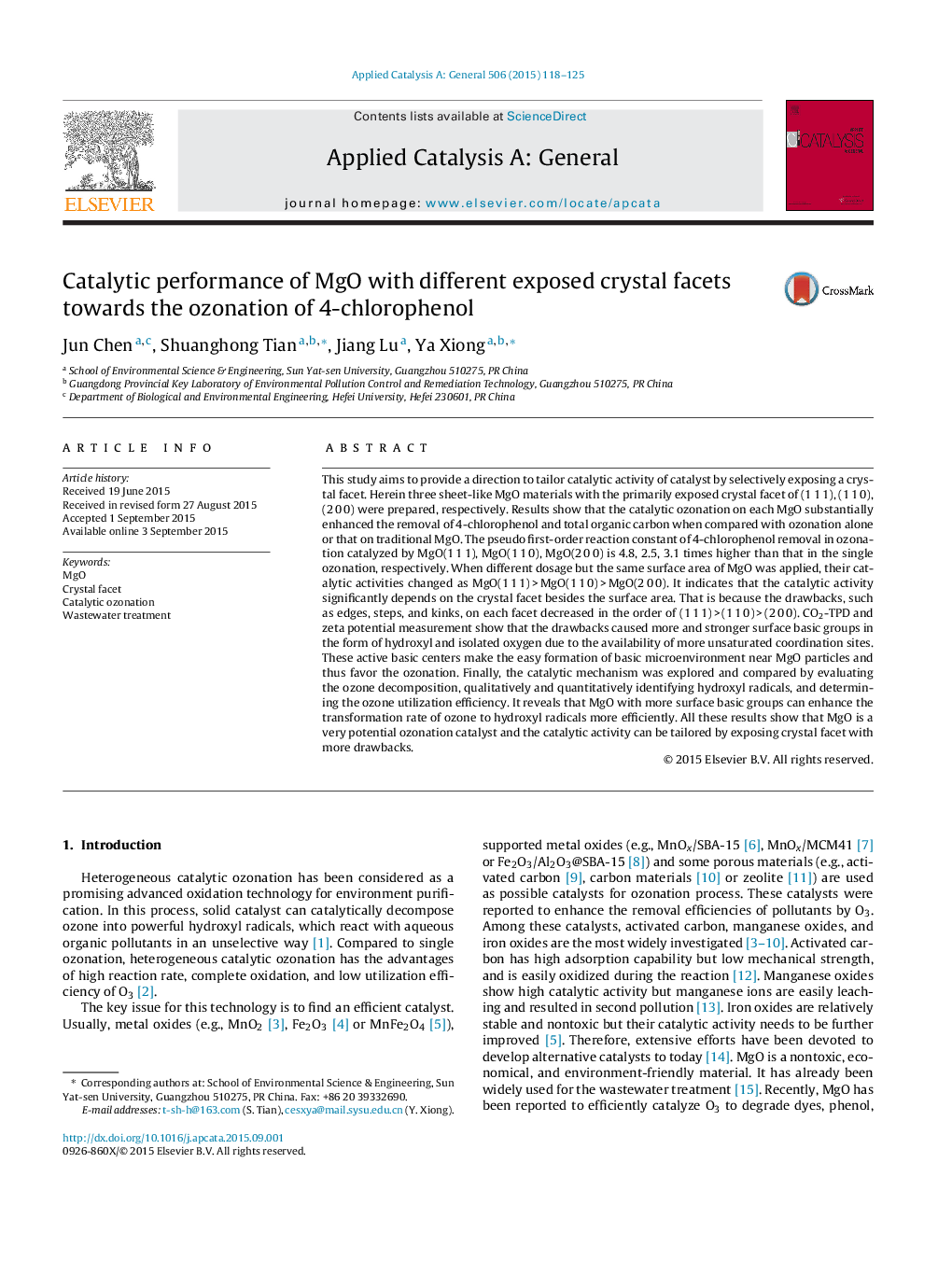| Article ID | Journal | Published Year | Pages | File Type |
|---|---|---|---|---|
| 39050 | Applied Catalysis A: General | 2015 | 8 Pages |
•Three sheet-like MgO were initially used as ozonation catalysts.•Three MgO primarily exposed crystal facet of (1 1 1), (1 1 0), (2 0 0), respectively.•Three MgO enhanced the ozonation rate (k4-CP) by 377%, 151%, 206%, respectively.•Three MgO show much higher catalytic activity than the traditional MgO.•Surface basic groups promoted the transformation of ozone to hydroxyl radicals.
This study aims to provide a direction to tailor catalytic activity of catalyst by selectively exposing a crystal facet. Herein three sheet-like MgO materials with the primarily exposed crystal facet of (1 1 1), (1 1 0), (2 0 0) were prepared, respectively. Results show that the catalytic ozonation on each MgO substantially enhanced the removal of 4-chlorophenol and total organic carbon when compared with ozonation alone or that on traditional MgO. The pseudo first-order reaction constant of 4-chlorophenol removal in ozonation catalyzed by MgO(1 1 1), MgO(1 1 0), MgO(2 0 0) is 4.8, 2.5, 3.1 times higher than that in the single ozonation, respectively. When different dosage but the same surface area of MgO was applied, their catalytic activities changed as MgO(1 1 1) > MgO(1 1 0) > MgO(2 0 0). It indicates that the catalytic activity significantly depends on the crystal facet besides the surface area. That is because the drawbacks, such as edges, steps, and kinks, on each facet decreased in the order of (1 1 1) > (1 1 0) > (2 0 0). CO2-TPD and zeta potential measurement show that the drawbacks caused more and stronger surface basic groups in the form of hydroxyl and isolated oxygen due to the availability of more unsaturated coordination sites. These active basic centers make the easy formation of basic microenvironment near MgO particles and thus favor the ozonation. Finally, the catalytic mechanism was explored and compared by evaluating the ozone decomposition, qualitatively and quantitatively identifying hydroxyl radicals, and determining the ozone utilization efficiency. It reveals that MgO with more surface basic groups can enhance the transformation rate of ozone to hydroxyl radicals more efficiently. All these results show that MgO is a very potential ozonation catalyst and the catalytic activity can be tailored by exposing crystal facet with more drawbacks.
Graphical abstractFigure optionsDownload full-size imageDownload high-quality image (215 K)Download as PowerPoint slide
